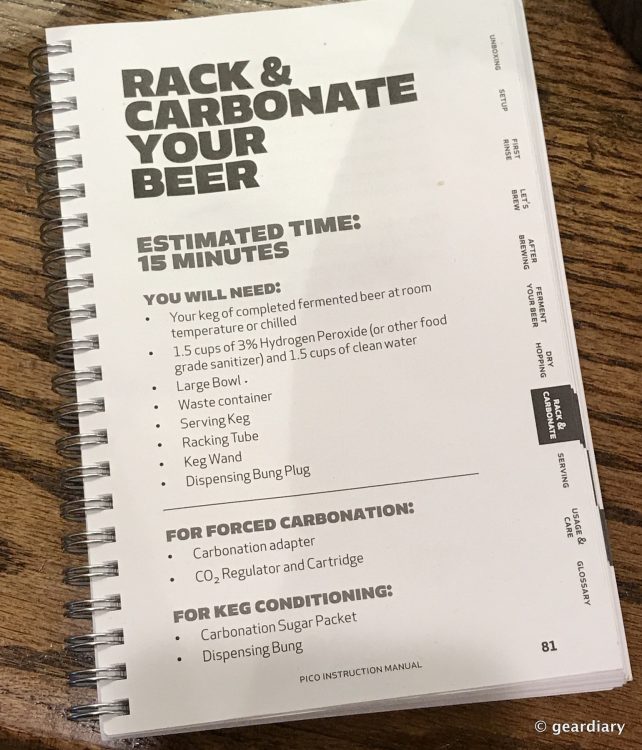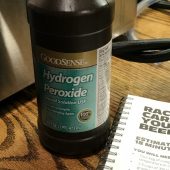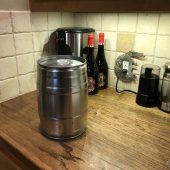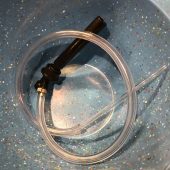When I last left off, I had brewed my first batch of homebrew with the PicoBrew Pico S. I waited a little bit longer than after the fermentation had stopped to rack and keg it because I wanted to be sure I’d given it enough time, and because Kev said it wouldn’t hurt anything to wait; he was right.

Before you get started, you need to make sure that you either have 1.5 cups of 3% hydrogen peroxide or some other kind of foo-grade sanitizer like StarSan. You’ll also need a large bowl to cleaning the keg wand and the racking tube, as well as a container to catch the trub …
Trub (brewing) … Trub may also refer to the lees, or layer of sediment, left at the bottom of the fermenter after the yeast has completed the bulk of the fermentation. It is composed mainly of heavy fats, coagulated proteins, and (when in fermenter) inactive yeast.
… that comes out of the racking tube (it smells rich and interesting, but you don’t want it in your finished product).
So, to start, you’ll pour the hydrogen peroxide and 1.5 cups of clean water into the serving keg and then put the opaque plastic shipping plug back in place. After giving the keg a good couple of shakes to make sure the cleaning solution has touched the entire interior, you’ll let it sit for 10 minutes. After your timer goes off, you’ll dump the cleaning solution into the large bowl; one of the keg wands and the racking tube will go in there for 5 minutes. After rinsing out the serving keg with clean water, you’ll be ready for the next step — your first rack! Under utilities on the Pico S, you’ll find that option.




